Exploring masculinity, emotion and acceptance: ‘Veiled’
September 4, 2014
[Image: © But I Like It Photography]
This is not an exhibition in the sense that most would expect. There was no private view to see the work on the walls of the ex-vintage shop, now being used as an exhibition space with East Street Arts, but the works were placed on the windows. The photographs celebrate this year’s theme of Leeds Gay Pride – Love and Marriage, showcasing a variety of mostly half-nude gay men in veils. The exhibition’s press release states the following:
The practice of obscuring a person’s face by covering it with a piece of material is a practice that goes back at least 3,000 years – and continues today. The same basic reasoning behind this is still generally held – covering things of beauty so that men (predominantly) are protected from their urges – and is usually determined (or co-opted) by some religious or cultural imperative.
The pieces are positioned at eye level for the average passer-by on their way along the street. They are almost confrontational. Almost, but not quite. Perhaps 20 or even 10 years ago, this might have been a shock to some. In 2014, the year same-sex marriage has been legalised, it has less of that effect. What the images do suggest is a secondary context; that veils are not only symbols of marriage, but also of mourning, showing us that while we of the LGBT (lesbian, gay, bisexual, transgender) community have a lot to celebrate, we also have a difficult and even traumatic history that should be remembered and respected. This is an important message to be conveyed, especially during the weekend of Gay Pride; a weekend of celebration and looking to the future of LGBT rights.
I jumped at the chance to ask the image-maker behind But I Like It photography, Jon Elland, a few quick questions that I was dying to know the answer to.
TSOTA: Hi Jon – how were you first inspired to make the project?
JE: Like much of my work, the project started with a random trial that just grew. Initially I put one of my models under a sheet of voile – over 3 years ago now – seeing how it worked, but also observing and hearing how the guys I shoot responded to it. It’s grown over time and now I’m researching essays on the history and politics of veiling and extending the project into an international collaborative project.
TSOTA: What was it like having this exhibition on display over the Leeds Pride weekend?
JE: It was great. I’ve had images in exhibitions linked with London Pride in the past and coincidentally, had images accepted for exhibitions linked to both Brighton and Manchester Prides this year. But this is the icing on the cake – not only is it a solo exhibition in my own city and on the Pride route – but this brought to fruition an exhibition which fell through last year. I’m really overjoyed to display this work in the city and to be able to give the models, many of whom live locally, a chance to see themselves presented in an artistic situation.

© But I Like It Photography
TSOTA: Do you feel there should be more art exhibitions and events happening for Pride?
JE: Absolutely. Having grown up with many of the barriers to equality falling – from the age of consent changing from 21 to 18 shortly after my own 21st, to the more recent equality of marriage for same sex partners – I think it’s important that we not only celebrate the opportunity we have to be as free as we are now, but to have a chance to hold a real conversation on what Pride means for us – both in the UK and elsewhere in the world. I think the arts have a large part to play in this and may give participants more of a chance to consider where we are, and what we still have to achieve.
TSOTA: What do you feel the reaction of the LGBT and Queer communities has been to the work so far?
JE: I’ve only really had personal responses – and most of those positive about the quality of the work. To date I’ve not had any extended conversations about what the work means to others. This is something I’d love to get more input on.
TSOTA: Was there a reasoning behind using only men in the images?
JE: My portraiture practice started out as male-only. I am a gay man and I associate most strongly with issues that gay men face. Not only that, but I find it easier to work to make men look at their best – even if that’s my take on what that might be.
Click on the thumbnails below to enlarge
All Images © But I Like It Photography
The reason for a focus on the veil is that it is rarely associated with masculinity and my findings have shown that the men who have worn it find it in ways, liberating. I found it allows them easier access to more emotional responses and frees them up to be more creative as models too. I saw no reason to put women behind the veil as it neither provides more answers, nor does it raise the same questions I aimed to suggest in the images.
My artistic practice is looking more and more at how gay men obscure themselves – how they feel the need to behave in certain ways to achieve acceptance – whether in the world at large, within gay subcultures or in private situations. I’d like to give space for the reasons behind this to be aired and to see how relevant these are today and into the future. This exhibition allows me to move forward into this broader arena of questioning.
Ryan Thompson
Visit www.butilikeit.co.uk for more information on Veiled and other projects by But I Like It. Follow on Twitter @butilikeit
Filed under: Art & Photography
Tagged with: LGBT
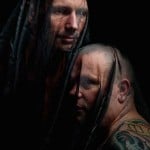
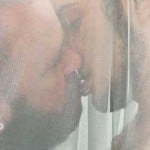
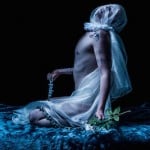
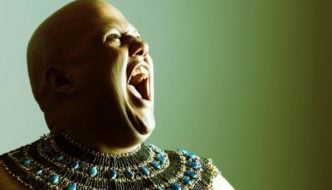
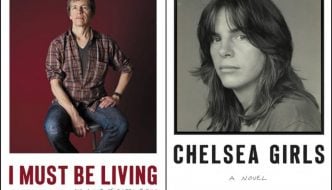
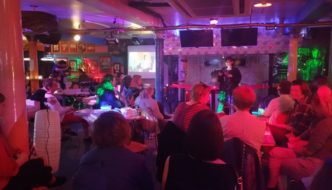
Comments